Evidence Of Early Metalworking In Arctic Canada – European Technologies Involved
AncientPages.com - A new evidence related to an early (pre-Columbian) European presence in Arctic Canada has been examined in a study conducted by Dr. Patricia Sutherland, an honorary research fellow at the University of Aberdeen.
Dr Sutherland has spent 15 years recovering other specimens in Arctic Canada that resemble those used by Europeans of the Viking and Medieval periods.

The Inuit and earlier peoples of Arctic Canada cold-hammered meteoric iron and native copper in order to make tools, but neither they nor other indigenous peoples of northern North America practized high - temperature metalworking.
Dr Sutherland's team studied artifacts from archaeological sites that had been assumed to relate to pre-Inuit indigenous occupations of the region in the centuries around A.D. 1000 have recently been recognized as having been manufactured using European technologies.
The Viking-age Norse established settlements on the southwestern coast of Greenland about A.D. 1000, and these continued to be occupied until the early 15th century.
Although less than 400 km separated the Norse Greenlandic colonies from the coasts of Arctic Canada, and explorations to the west of Greenland are described in Icelandic sagas, surprisingly little is known of ventures to North America.
The Inuit and earlier peoples of Arctic Canada cold-hammered meteoric iron and native copper in order to make tools, but neither they nor other indigenous peoples of northern North America practized high - temperature metalworking.
The results of the recent research show the earliest evidence of high-temperature non-ferrous metalworking in North America to the north of what is now Mexico.
An object that was found by archaeologists a half-century ago has now been recognized as further evidence of a Viking or Mediaeval Norse presence in Arctic Canada during the centuries around 1000 A.D.
The artifact was originally excavated during the 1960s and identified as the fragment of a small soapstone pot made by the local indigenous people, the Palaeo-Eskimo who occupied the area in the centuries around 1000 A.D.
Now researchers have employed scanning electron microscopy to determine if metal traces were present in a small stone container (about 48 mm tall) from an archaeological site on southern Baffin Island.
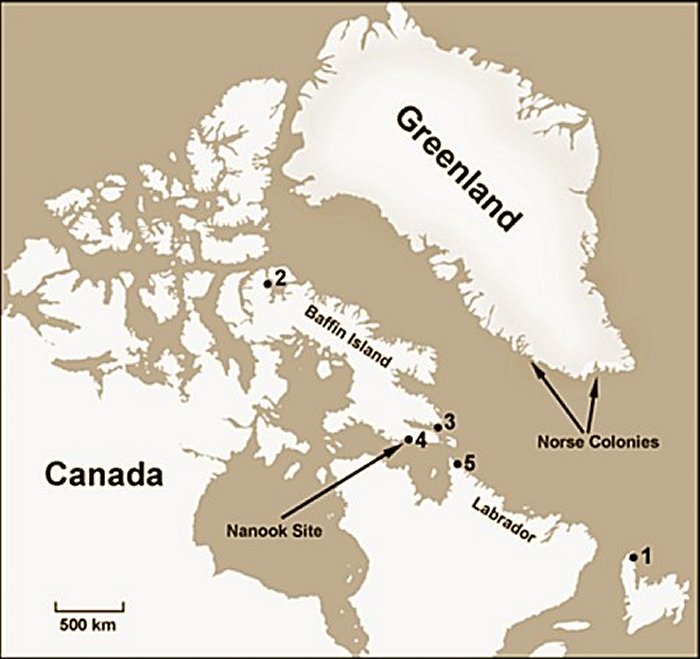
The Vikings and their mediaeval Norse descendants established colonies in southwestern Greenland about 1000 AD, and occupied the region for over 400 years. After more than a decade of research on material from the Eastern Arctic, the evidence indicates a significant early European presence in Arctic Canada.
They found that the interior of the vessel contained fragments of bronze, an alloy of copper and tin, as well as small spherules of glass which are formed when rock is heated to high temperatures.
The object is a crucible for melting bronze, likely in order to cast it into small tools or ornaments. The crucible appears to have been broken while in use, suggesting that it was likely used at the locality where it was found.
Among the Palaeo-Eskimo artifacts Sutherland has identified a wide range of specimens - like lengths of yarn spun from the fur of local animals, whetstones bearing metal traces from tools that had been sharpened, and tally sticks of the type used for recording transactions.
Interestingly, these artifacts resemble those used by Europeans of the Viking and Mediaeval periods.
The Vikings and their mediaeval Norse descendants established colonies in southwestern Greenland about 1000 AD, and occupied the region for over 400 years. After more than a decade of research on material from the Eastern Arctic, the evidence indicates a significant early European presence in Arctic Canada.
The Norse would likely have travelled to the area in order to obtain furs and walrus ivory, either by hunting or by trading with the indigenous people.
AncientPages.com
More From Ancient Pages
-
 New Egyptian Dinosaur Helps To Reconstruct Evolution Of Dinosaurs In Africa
Archaeology | Jan 30, 2018
New Egyptian Dinosaur Helps To Reconstruct Evolution Of Dinosaurs In Africa
Archaeology | Jan 30, 2018 -
 Two Giant Limestone Sphinxes Of Pharaoh Amenhotep III And A Statue Of Goddess Sekhmet Discovered In Luxor
Archaeology | Aug 11, 2022
Two Giant Limestone Sphinxes Of Pharaoh Amenhotep III And A Statue Of Goddess Sekhmet Discovered In Luxor
Archaeology | Aug 11, 2022 -
 Central Asia Identified As A Key Region For Human Ancestors
Archaeology | Oct 22, 2022
Central Asia Identified As A Key Region For Human Ancestors
Archaeology | Oct 22, 2022 -
 Iraq’s Ancient Kish City Survived The Great Flood – Today It’s Neglected And Lies Buried In Sand
Civilizations | Sep 24, 2015
Iraq’s Ancient Kish City Survived The Great Flood – Today It’s Neglected And Lies Buried In Sand
Civilizations | Sep 24, 2015 -
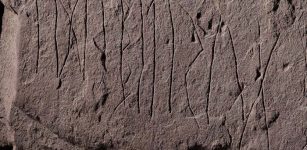 Mysterious Svingerud Stone – World’s Oldest Rune Stone With Enigmatic Inscriptions Investigated By Experts – What Does It Say?
Archaeology | Jan 17, 2023
Mysterious Svingerud Stone – World’s Oldest Rune Stone With Enigmatic Inscriptions Investigated By Experts – What Does It Say?
Archaeology | Jan 17, 2023 -
 History Of Jarlshof – Thousands Of Years Of History With Traces Of Picts, Vikings And Scots
Featured Stories | Jun 4, 2020
History Of Jarlshof – Thousands Of Years Of History With Traces Of Picts, Vikings And Scots
Featured Stories | Jun 4, 2020 -
 1,600-Year-Old Pendants Depicting Humans And Animals Excavated In Ancient Port-City Of Assos
Archaeology | Jan 21, 2020
1,600-Year-Old Pendants Depicting Humans And Animals Excavated In Ancient Port-City Of Assos
Archaeology | Jan 21, 2020 -
 Ancient Gaziantep Castle Destroyed In Turkey Earthquake
News | Feb 6, 2023
Ancient Gaziantep Castle Destroyed In Turkey Earthquake
News | Feb 6, 2023 -
 Old Sword Decorated With Inscription And Related To 1173 Battle Of Fornham – Unearthed
Archaeology | Apr 8, 2017
Old Sword Decorated With Inscription And Related To 1173 Battle Of Fornham – Unearthed
Archaeology | Apr 8, 2017 -
 Arslantepe Mound – Home To The Oldest City-State Of Anatolia
Featured Stories | Jun 7, 2022
Arslantepe Mound – Home To The Oldest City-State Of Anatolia
Featured Stories | Jun 7, 2022 -
 LIDAR Discovers Lost Ancient Cities Older Than Any Known Complex Amazonian Society
Archaeology | Jan 12, 2024
LIDAR Discovers Lost Ancient Cities Older Than Any Known Complex Amazonian Society
Archaeology | Jan 12, 2024 -
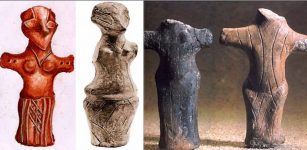 Mysterious Vinca Culture Is Among The Most Advanced Prehistoric Societies In Europe
Civilizations | Jun 23, 2020
Mysterious Vinca Culture Is Among The Most Advanced Prehistoric Societies In Europe
Civilizations | Jun 23, 2020 -
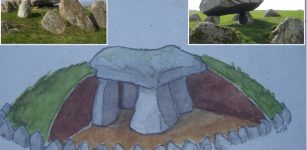 Skegriedösen (Skegrie Dolmen) – 5,000-Year-Old Stone Chamber Tomb In Southern Sweden
Featured Stories | Feb 11, 2023
Skegriedösen (Skegrie Dolmen) – 5,000-Year-Old Stone Chamber Tomb In Southern Sweden
Featured Stories | Feb 11, 2023 -
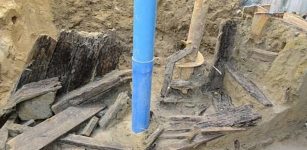 Archaeologists Discover A Secret Escape Tunnel In Copenhagen, Denmark
Archaeology | May 5, 2020
Archaeologists Discover A Secret Escape Tunnel In Copenhagen, Denmark
Archaeology | May 5, 2020 -
 Fixing Archaeology’s Dating Problem – New Method Developed By Scientists
Archaeology | Sep 17, 2021
Fixing Archaeology’s Dating Problem – New Method Developed By Scientists
Archaeology | Sep 17, 2021 -
 Ancient Burial Site At Vulci Reveals Treasure Of Coins Dated To 3rd Century B.C
Archaeology | Jul 12, 2018
Ancient Burial Site At Vulci Reveals Treasure Of Coins Dated To 3rd Century B.C
Archaeology | Jul 12, 2018 -
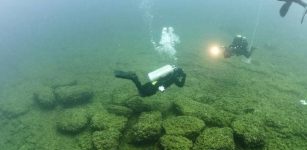 Traces Of A 9,000-Year-Old Lost Unknown Civilization Discovered In Lake Huron, Michigan
Civilizations | Aug 11, 2014
Traces Of A 9,000-Year-Old Lost Unknown Civilization Discovered In Lake Huron, Michigan
Civilizations | Aug 11, 2014 -
 Pacific God A’a: Fascinating Polynesian Sculpture Designed To Carry A Human Skull And Bones
Archaeology | Apr 9, 2016
Pacific God A’a: Fascinating Polynesian Sculpture Designed To Carry A Human Skull And Bones
Archaeology | Apr 9, 2016 -
 Hundreds Of Marvelous Ancient Egyptian Treasures Found Inside Tombs In Minya
Archaeology | Oct 27, 2020
Hundreds Of Marvelous Ancient Egyptian Treasures Found Inside Tombs In Minya
Archaeology | Oct 27, 2020 -
 Glass Technology Was Known In Sahara Centuries Before The Arrival Of Europeans
Ancient Technology | Jan 20, 2018
Glass Technology Was Known In Sahara Centuries Before The Arrival Of Europeans
Ancient Technology | Jan 20, 2018

